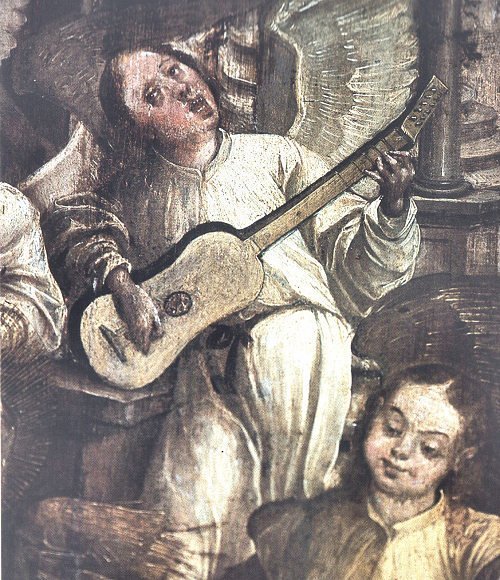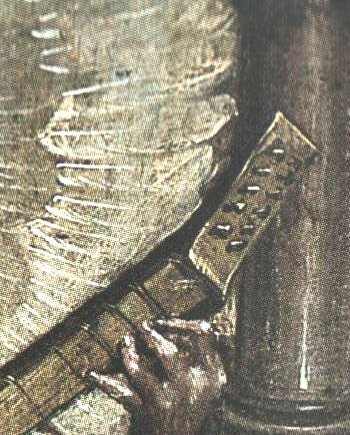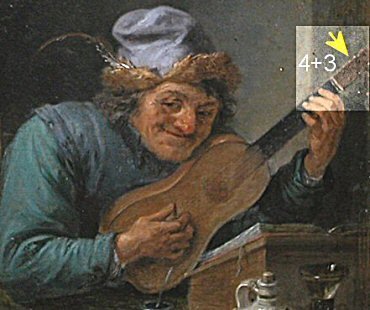ANJO COM VIOLA – a unique 16th century representation of the vihuela from Abrantes, Portugal

 |
 |
 |
This truly unique painting (c.1550s – 1560s) from the Igreja da Misericórdia (Abrantes, Portugal)* shows what appears to be a six-course viola / vihuela which is provided with eleven pegs for strings in its peg head. To my knowledge this is the only existing source of iconographical evidence known to the present day that, in a way, serves as visual confirmation to what one of the late-16th century historical records refers to as an ‘eleven string viola’. The pegs are arranged in two rows, five on the left and six on the right side of the peg head [left picture] and thus illustrating that an uneven peg number was indeed a feature of organological diversity in 16th century vihuela construction. At least two other representations showing similar, non-symmetric ways of peg arrangement, this time on four-course guitars [top and bottom right pictures], have survived: on a self-portrait of David Teniers le Jeune (1610 – 1690) and on a pilaster fragment of the Duomo of Cremona (c. 1560). Although
fragmentary, the depicted instrument is remarkable in a few other
details: the long shallow
neck corresponding with an equally
shallow string band on the bridge, the core of the neck that is
shaped so that it comes to the full depth of the sides at the join
with
the body and a rather pronounced stretch in the the middle bouts
area of the body which results in the long slender curve of the
outline. All these features are remarkably similar to those of
the Belchior
Dias 1581 vihuela from the Royal College of Music London, needless
to say the eleven-peg feature itself! * Many thanks to Diana Mira (www.pedexumbo.com) for her kind help in obtaining this image for me. |
home vihuelas guitars viols contact
This page was first created on 31 March 2006
© 2006 Alexander Batov